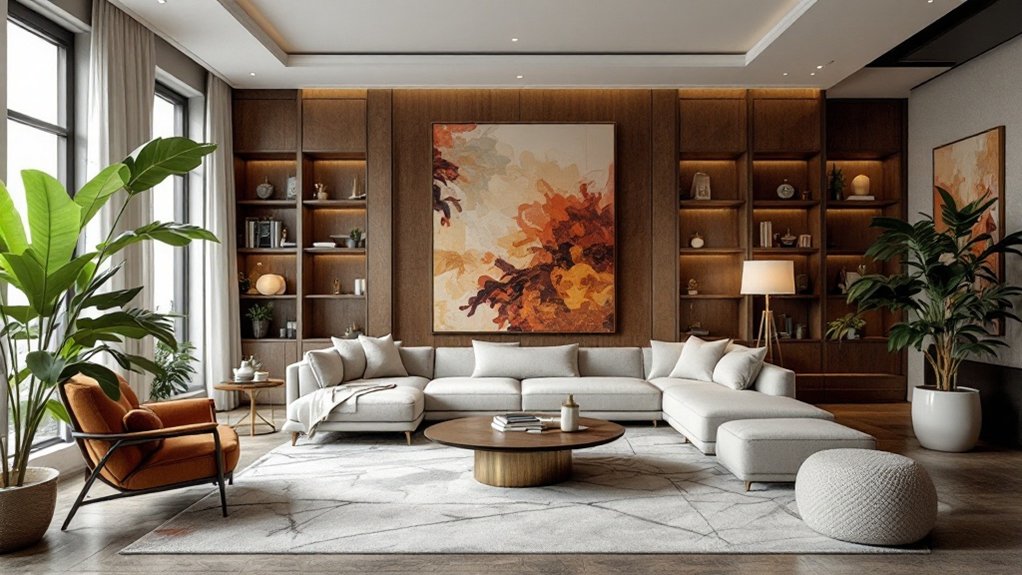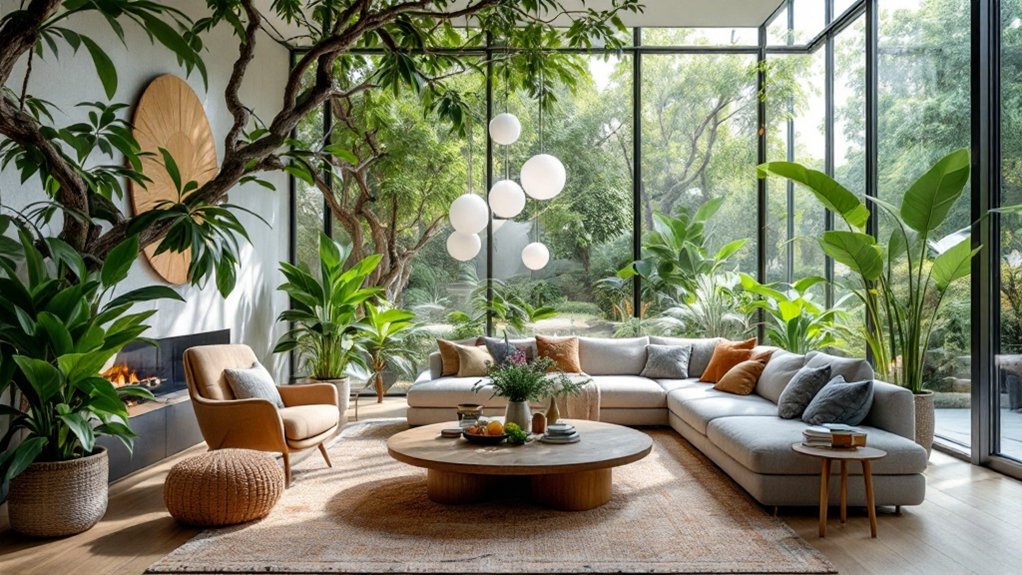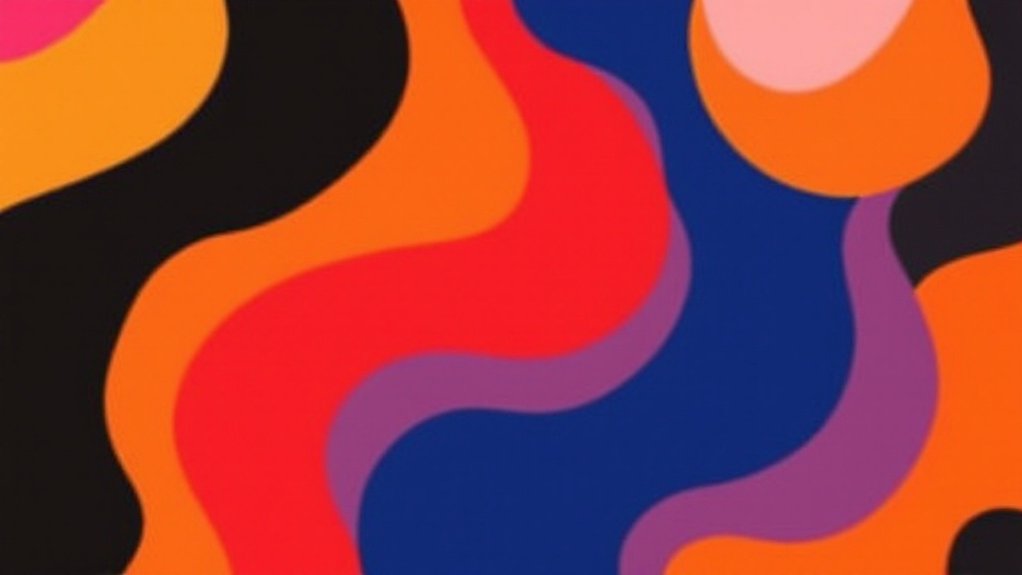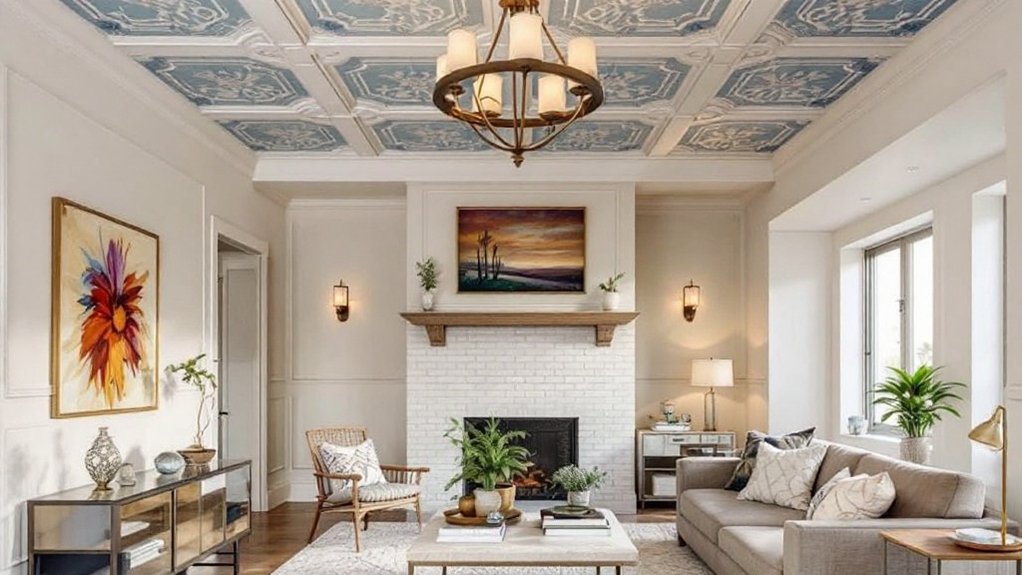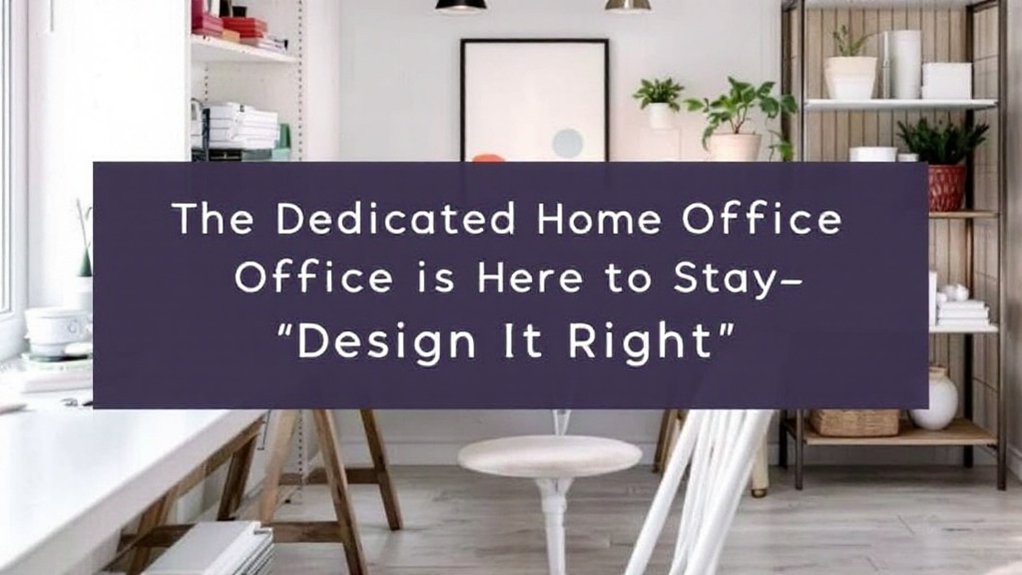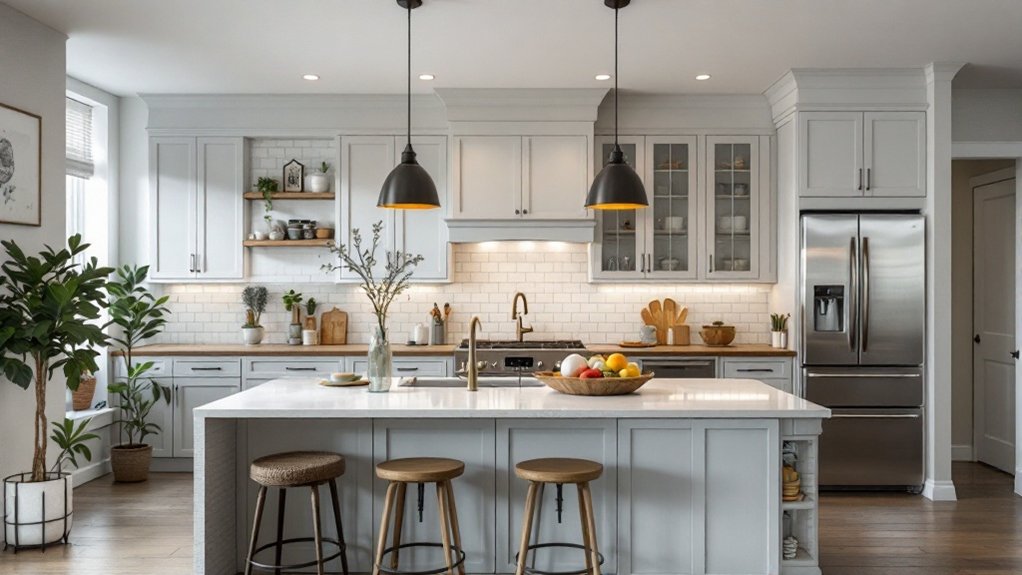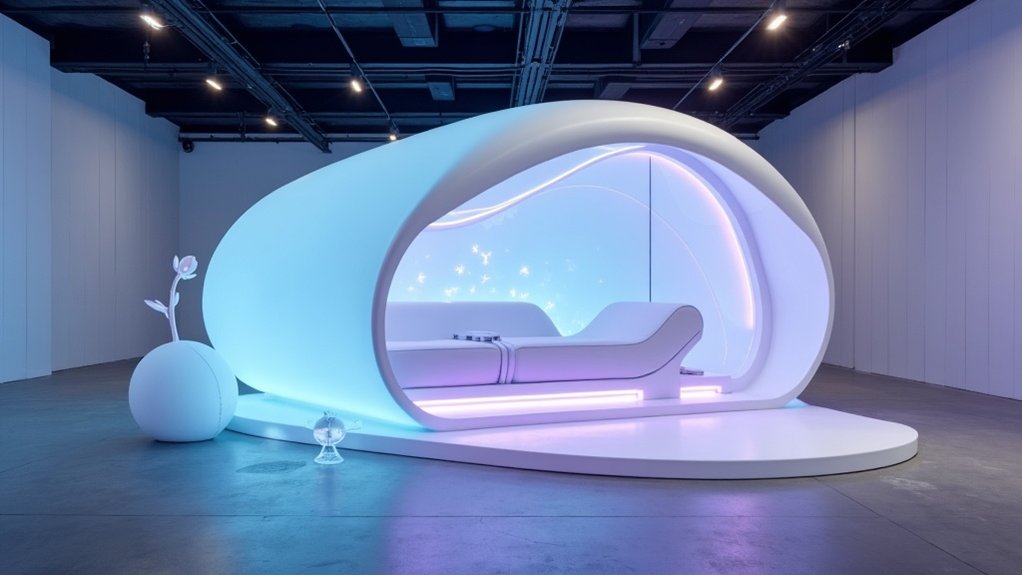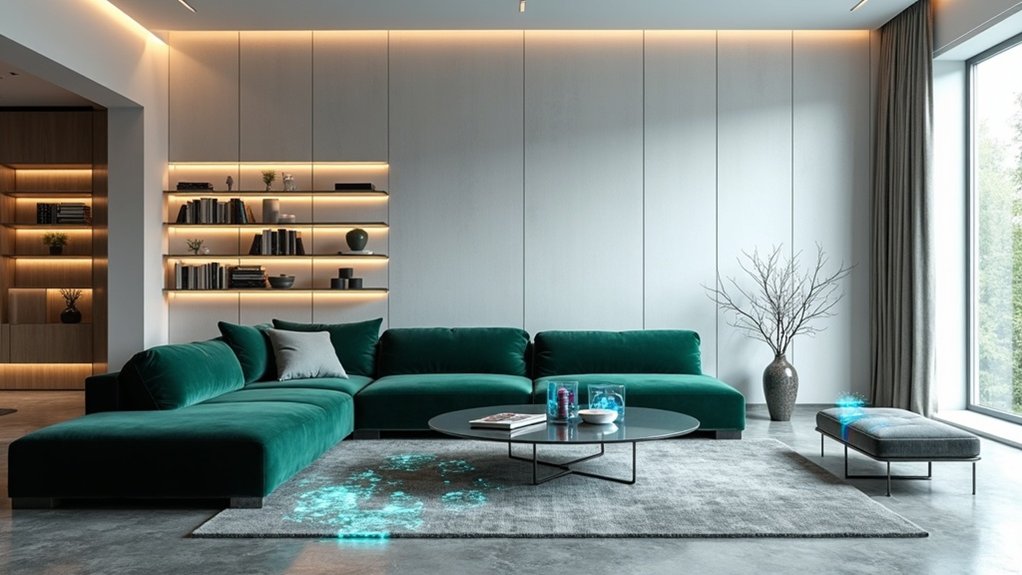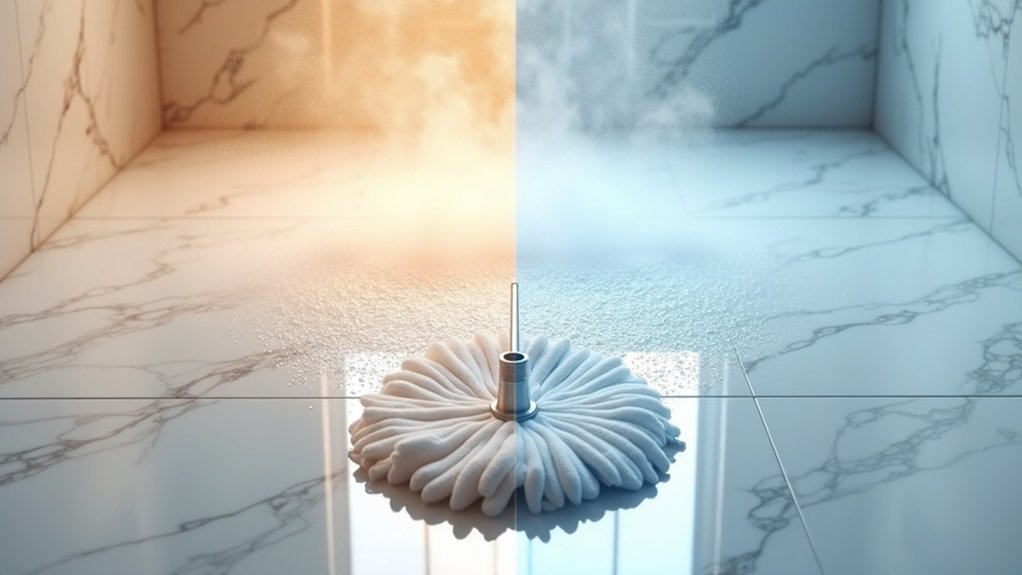Maximalism's resurgence reflects a cultural pendulum swing away from austere minimalism toward spaces that celebrate personal expression and visual abundance. This bold design movement, with roots in Baroque and Rococo periods, welcomes jewel tones, layered patterns, and rich textures to create dramatic, story-filled environments. The trend coincides with post-2008 economic growth, allowing homeowners to invest in decorative elements that showcase their individuality. Maximalism's appeal lies in transforming rooms into immersive experiences that invite deeper exploration of one's authentic style.
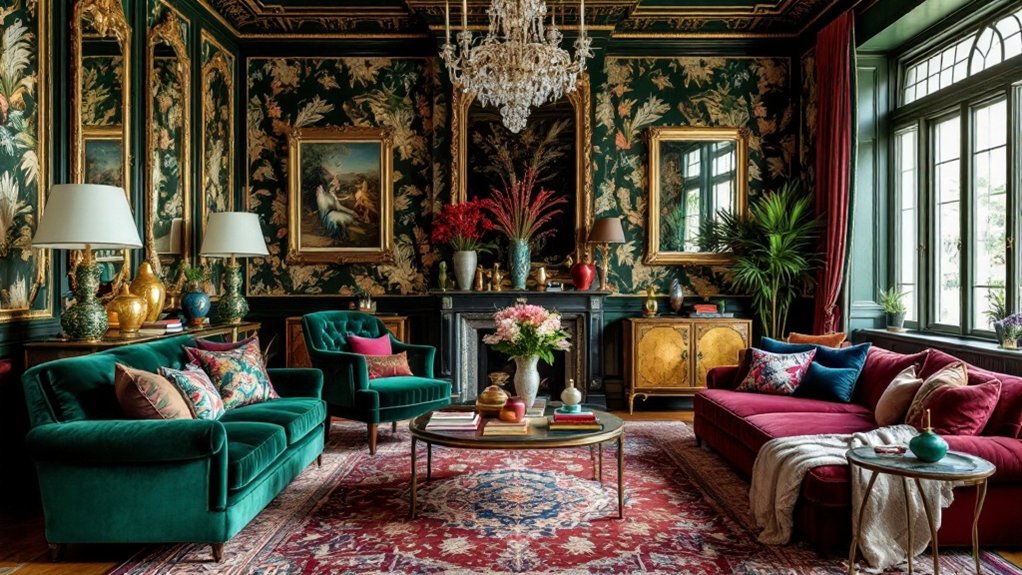
While minimalism has dominated interior design trends for the past decade, maximalism has emerged as a bold and exuberant countermovement that celebrates abundance, personal expression, and sensory richness. This vibrant aesthetic champions the use of jewel tones, layered patterns, and an array of textures to create spaces that feel both dramatic and deeply personal. The style's resurgence reflects a growing desire for interiors that tell stories and showcase individuality rather than conforming to stark, simplified spaces. The rise of maximalism coincides with increased economic growth post-2008, as people gained more disposable income to invest in decorative elements. Drawing from its rich heritage, maximalism traces its origins to the Baroque and Rococo periods known for their lavish ornamentation and grandeur.
At the heart of maximalism lies a fearless approach to color and pattern mixing. Emerald greens, sapphire blues, and ruby reds dominate these spaces, often appearing simultaneously in a single room through carefully curated combinations of furniture, textiles, and wall treatments. Patterns ranging from bold florals to intricate geometrics coexist harmoniously, their potential chaos tamed through thoughtful scaling and strategic repetition of motifs throughout the space.
The movement's emphasis on tactile experiences reveals itself through the intentional layering of luxurious materials. Velvet upholstery might sit alongside silk drapery, while metallic accents and richly textured rugs create an environment that invites both visual and physical exploration. This multisensory approach transforms rooms into immersive experiences rather than merely functional spaces.
Maximalist interiors serve as personal museums, showcasing collections of art, global artifacts, and cherished memorabilia. These spaces reject the notion that possessions should be hidden away, instead celebrating the stories and memories embedded in each carefully chosen piece. The style includes both contemporary elements and vintage finds, creating an eclectic mix that feels collected over time rather than purchased as a matching set.
This return to abundance represents more than just a reaction against minimalism; it reflects a broader cultural shift toward authenticity and individual expression in design. Through its intentional combination of colors, patterns, textures, and meaningful objects, maximalism creates spaces that feel both curated and deeply personal, offering a rich alternative to the austere aesthetics that have long dominated interior design.
Frequently Asked Questions
How Much Does It Typically Cost to Create a Maximalist-Styled Room?
Creating a maximalist-styled room typically costs between $17,450 and $49,500, with living rooms usually requiring the highest investment.
Key elements driving costs include high-end rugs ($2,500-$8,000), extensive art collections ($1,000-$6,000), and layered furniture groupings ($2,000-$6,000 per arrangement).
Nevertheless, budget-conscious decorators can achieve maximalist effects through strategic thrifting, DIY projects, and selective investment in statement pieces, potentially reducing costs by 50% or more.
Can Maximalism Work in Small Spaces or Apartments?
Maximalism can absolutely thrive in small spaces through strategic implementation.
Design experts emphasize that thoughtful layering of patterns, textures, and bold colors can create depth and visual interest without overwhelming compact areas.
By incorporating varied finishes – from glossy lacquered pieces to matte surfaces – and mixing pattern scales, small rooms can achieve maximalist impact while maintaining functionality.
Statement pieces and enhanced wall treatments further demonstrate that size need not limit creative expression.
What Are the Best Colors to Start With for Maximalist Design?
For those venturing into maximalist design, jewel tones offer an excellent foundation, particularly emerald green, sapphire blue, and rich amethyst purple.
These deep, luxurious hues create instant visual drama while providing versatile anchoring points for additional layers. Complementing these with vibrant accent colors like gold, radiant red, or playful pink allows for natural progression into more complex color combinations.
Starting with a neutral backdrop, such as crisp white, helps balance these bold color choices effectively.
How Do You Prevent Maximalist Design From Looking Cluttered and Messy?
Preventing maximalist spaces from appearing chaotic requires strategic curation and thoughtful organization.
Designers recommend grouping similar items together, maintaining clear focal points, and incorporating adequate negative space to let the eye rest.
Intentional layering of textures, patterns, and objects should follow a unified narrative, while dedicated storage solutions help contain smaller items.
Regular editing and rotation of decorative elements guarantees the space remains dynamic without becoming overwhelming.
Should All Rooms in a House Follow the Maximalist Style?
While maximalism can create visual impact, applying it to every room isn't necessarily ideal.
Design experts recommend strategic implementation, reserving bold maximalist statements for social spaces like living rooms and entryways, while adopting more restrained versions in bedrooms and workspaces.
This balanced approach prevents sensory overload while maintaining functionality.
Moreover, varying the intensity of maximalist elements throughout the home creates natural transitions and allows each room to serve its intended purpose effectively.
